Is Chinese Food Healthy for You? A Nutritional Perspective
Chinese cuisine, known for its vibrant flavors and diverse dishes, often raises questions about health and nutrition. When you indulge in this culinary style, you might wonder: is Chinese food healthy for you? Let’s explore this topic from a nutritional perspective.
Nutritional Elements of Chinese Food
At its core, Chinese food offers a mix of various ingredients that can provide nutritional benefits. Common ingredients often include:
- Vegetables: Chinese dishes usually feature a wide variety of vegetables such as bok choy, broccoli, and bell peppers. These vegetables are packed with vitamins, minerals, and antioxidants.
- Lean Proteins: Options like chicken, shrimp, and tofu are prevalent in Chinese cuisine. These sources of protein are essential for muscle maintenance and overall health.
- Whole Grains: Many traditional dishes utilize brown rice or whole grain noodles, which provide fiber and help maintain a healthy digestive system.
- Healthy Fats: Cooking oils like sesame oil and peanut oil are commonly used but in moderation, adding healthy fats that are beneficial for your heart.
Cooking Methods Matter
The way food is prepared significantly impacts its healthiness. Traditional Chinese cooking methods include steaming, stir-frying, and boiling, which can be healthier compared to methods that involve deep frying. For instance, a stir-fried vegetable dish can retain more nutrients than deep-fried spring rolls. Here are some common cooking methods, along with their health benefits:
| Cooking Method | Health Benefits |
|---|---|
| Steaming | Packs in nutrients while using minimal fat. |
| Stir-frying | Quick cooking retains a significant amount of vitamins. |
| Boiling | Healthy option if the broth is low in sodium. |
Some Health Concerns
While there are many healthy aspects of Chinese food, there are some concerns you should be aware of:
- High Sodium Content: Many soy sauces and broths contain high levels of sodium, which can contribute to elevated blood pressure.
- Saturated Fats: Fried dishes or those made with fatty cuts of meat may increase intake of unhealthy fats, leading to obesity and heart issues.
- Portion Sizes: Chinese food is often served in large portions, which may lead to overeating.
Making Healthier Choices
To enjoy Chinese food while maintaining a healthy diet, consider these tips:
- Choose dishes that are steamed or stir-fried, rather than deep-fried.
- Opt for brown rice or whole grain noodles when available.
- Ask for sauces on the side to control portion sizes and sodium intake.
- Load up on vegetables to increase fiber and nutrient intake.
Chinese food can be healthy depending on your choices and cooking methods. By selecting nutritious ingredients and cooking methods, you can enjoy the flavors of China while nourishing your body. For further insights into the health benefits of various cuisines, visit Eat Well 101 or check out Healthline for comprehensive nutrition facts. The key is to be mindful of what you order and how you prepare it. This way, you can fully experience the delightful aspects of Chinese cuisine while maintaining a balanced diet.
Common Ingredients in Chinese Cuisine and Their Health Benefits
Chinese cuisine is not only delicious but also packed with various ingredients that offer numerous health benefits. Understanding these ingredients can empower you to make healthier choices when eating Chinese food. Below are some common ingredients found in Chinese dishes and the health benefits they provide.
Rice
Rice is a staple in Chinese cuisine. It’s nourishing and versatile, providing a great source of carbohydrates. Brown rice is particularly healthy due to its high fiber content, which can help improve digestion and regulate blood sugar levels.
Tofu
Tofu is made from soybeans and is an essential protein source for vegetarians and vegans. It contains all nine essential amino acids and is low in calories. Additionally, tofu is packed with iron, calcium, and magnesium. Research suggests that the isoflavones in soy may help lower cholesterol and provide heart health benefits. Learn more about soy-based foods here.
Ginger
This aromatic root is often used as a spice in Chinese dishes. Ginger is known for its anti-inflammatory properties and can aid digestion and soothe nausea. Some studies have shown that ginger may also help reduce muscle pain and soreness after exercise.
Garlic
Garlic is another essential ingredient in Chinese cooking, celebrated for its flavorful kick and health benefits. It is rich in allicin, a compound known for its antimicrobial and immune-boosting properties. Regular consumption of garlic may lower blood pressure and improve cholesterol levels. You can find more information about the benefits of garlic here.
bok Choy
Bok choy is a leafy green vegetable that is a common ingredient in stir-fries and soups. It’s low in calories and high in vitamins A, C, and K, as well as calcium and iron. The high fiber content also supports digestive health. bok choy into your meals can help boost your nutrient intake.
Broccoli
This cruciferous vegetable is often featured in Chinese dishes. Broccoli is a powerhouse of nutrients, including vitamin C, vitamin K, and fiber. It is also known for its antioxidant properties, which may help combat oxidative stress and reduce the risk of chronic diseases.
Chili Peppers
Chili peppers add heat to dishes, but they also come with health benefits. They contain capsaicin, which can promote metabolism and help with weight management. Additionally, the compounds in chili peppers have been linked to pain relief and improved cardiovascular health.
Sesame Oil
Often used for cooking or as a dressing, sesame oil is rich in healthy fats and antioxidants. It contains sesamolins and sesamin, compounds that can help lower cholesterol levels and improve heart health. Using sesame oil in moderation can enhance the flavor of your meals while providing health benefits.
Green Tea
While not an ingredient in meals, green tea is often consumed with Chinese food. It’s rich in antioxidants and has been associated with various health benefits, such as improved brain function, fat loss, and decreased risk of heart disease. Explore the benefits of green tea here.
| Ingredient | Health Benefit |
|---|---|
| Rice | Provides energy; fiber in brown rice aids digestion |
| Tofu | High in protein; supports heart health |
| Ginger | Anti-inflammatory; aids digestion |
| Garlic | Immune booster; lowers blood pressure |
| Bok Choy | Rich in vitamins; supports digestion |
| Broccoli | High in antioxidants; reduces chronic disease risk |
| Chili Peppers | Promotes metabolism; can aid pain relief |
| Sesame Oil | Healthy fats; improves cholesterol |
| Green Tea | Rich in antioxidants; supports fat loss |
With such an array of nutritious ingredients, Chinese cuisine can certainly be a healthy choice when prepared mindfully. By incorporating these ingredients into your meals or choosing dishes that highlight them, you can enjoy the flavorful and healthful experience that Chinese food provides.
The Role of Cooking Methods in the Nutritional Value of Chinese Dishes
Chinese cuisine is diverse and rich in flavors, but the nutritional value can vary greatly based on cooking methods. It’s important to understand how the way food is prepared influences its health benefits. Here, we will explore different cooking techniques often used in Chinese dishes and their impact on nutrition.
Stir-Frying
Stir-frying is a prevalent method in Chinese cooking. This quick technique typically requires a small amount of oil and high heat, which helps retain the nutrients in vegetables and proteins. Nutritionally, stir-frying can be beneficial as it:
- Preserves vitamins B and C, found abundantly in vegetables.
- Reduces the absorption of excess fats, compared to deep-frying.
- Allows for a variety of ingredients, encouraging a balanced diet with proteins, fibers, and essential nutrients.
Steaming
Another method, steaming, is one of the healthiest cooking techniques. This method is widely used for preparing dim sum and various vegetable dishes. Here are some nutritional advantages of steaming:
- Helps retain moisture without the need for excess fats.
- Preserves mineral content and vitamins which might be lost in other cooking methods.
- Enhances the natural flavors of food without the use of heavy sauces.
Boiling and Poaching
Boiling or poaching is common for preparing broths and soups, integral parts of many Chinese meals. While this cooking technique can help create flavorful dishes, it can also deplete nutrients if not done properly. Here’s how:
- Cooking meats in broth can impart flavors and nutrients into the liquid.
- However, boiling can lead to nutrient loss, especially water-soluble vitamins.
- To combat nutrient loss, it is advisable to use the broth for soups or sauces.
Deep-Frying
Deep-frying is popular for dishes like spring rolls and fried rice. While these dishes offer great flavors, the health implications can be significant. Consider the following aspects:
- High in calories due to excess oil absorption.
- Increased risks of heart disease when consumed frequently due to unhealthy fats.
- Can lead to digestive discomfort because of heavy oils used.
Wok Cooking
Wok cooking is a central aspect of Chinese culinary tradition. The unique design allows for a variety of cooking techniques, including stir-frying, steaming, and boiling. The quick cooking time helps maintain nutritional value. Here’s how it contributes to healthy cooking:
- Promotes even heating and rapid cooking, reducing nutrient degradation.
- Facilitates the use of minimal fats, keeping calorie counts lower.
- Presents an option to prepare diverse dishes in one meal, promoting nutritional variety.
Choosing Healthier Ingredients
To maximize the nutritional value of Chinese dishes, ingredient selection is also crucial. whole grains, fresh vegetables, and lean proteins can enhance the health benefits of your meals.
| Cooking Method | Nutritional Benefits | Potential Drawbacks |
|---|---|---|
| Stir-Frying | Preserves nutrients, low-fat | None significant |
| Steaming | Retains vitamins, low-fat | Can result in bland flavor |
| Boiling | Creates flavorful broths | Nutrient loss in water |
| Deep-Frying | Rich flavors | High in calories and unhealthy fats |
| Wok Cooking | Retains nutrients, versatile | Can lead to overcooking if not careful |
Healthier cooking methods into your Chinese cuisine can significantly impact your overall health. Seeking out dishes that employ steaming or stir-frying while limiting deep-fried options will create a more balanced diet. For recipes and authentic meal ideas, visit The Spruce Eats and China Sichuan Food for inspiration.
By understanding these diverse cooking methods and their influences on nutritional value, you can enjoy the delicious flavors of Chinese dishes while being mindful of your health. Every technique has its unique advantages and disadvantages, but the right choices can lead you to healthier, fulfilling meals.
Comparing Traditional Chinese Food with Western Fast Food Choices
When it comes to food choices, few comparisons are as striking as that between traditional Chinese cuisine and Western fast foods. While both have their unique flavors and preparation methods, they also present various nutritional aspects that can significantly impact your health.
Ingredients and Nutrition
Traditional Chinese food tends to emphasize fresh and seasonal ingredients with a balance of flavors. Key components include:
- Vegetables: Plentiful in stir-fries and soups, promoting vitamins and fiber.
- Lean Proteins: Tofu, chicken, and seafood are common, offering essential proteins without excess fat.
- Whole Grains: Rice and whole grain noodles serve as healthy carbohydrate sources.
- Herbs and Spices: Ginger, garlic, and chili enhance flavor and provide health benefits.
In contrast, Western fast food often relies on processed ingredients, high fats, sugars, and sodium. Components might include:
- Saturated Fats: Found in fried foods and fatty meats, which can raise cholesterol levels.
- Simple Carbohydrates: White bread and sugary snacks can spike blood sugar levels.
- Additives: Preservatives and artificial flavors are common in many fast food items.
Health Impacts
The health implications of these culinary choices are quite different. With traditional Chinese food:
- Lower Caloric Intake: A typical meal is often lower in calories compared to fast food options, helping in weight management.
- Rich in Nutrients: The diverse ingredients provide a wide range of vitamins and minerals necessary for overall health.
- Anti-Inflammatory Properties: Ingredients like ginger and turmeric may help reduce inflammation and prevent chronic diseases.
On the other hand, frequent consumption of Western fast food can lead to several health issues:
- Obesity: High-calorie meals can contribute to weight gain.
- Heart Disease: Diets high in saturated fats and sodium are linked to heart ailments.
- Poor Digestion: Processed foods tend to lack fiber, which is vital for digestive health.
Preparation Methods
The way food is prepared can also affect its healthfulness. Traditional Chinese recipes often involve:
- Stir-frying: A quick cooking method that retains nutrients by using minimal oil.
- Steaming: Preserves vitamins and enhances the natural flavors of ingredients.
- Slow Cooking: Broths and soups made with fresh ingredients allow flavors to meld without adding unhealthy fats.
Conversely, Western fast food primarily features:
- Frying: This method can add unnecessary calories and fats.
- Microwave Preparation: While convenient, it often leads to nutrient loss.
- Processing: Many items are heavily processed to enhance flavor and shelf life, impacting their nutritional profiles.
Cultural Aspects
Food is a reflection of culture. Traditional Chinese cuisine emphasizes communal dining, where families share dishes and enjoy meals together. This fosters connection and mindfulness during eating. In contrast, Western fast food often promotes individual meals, leading to a less communal experience.
When weighing traditional Chinese food against Western fast food, it becomes clear that traditional Chinese cuisine offers numerous health benefits. By focusing on fresh ingredients, balanced flavors, and healthy preparation methods, it provides a nutritionally rich alternative. In contrast, while Western fast food is convenient, its nutritional drawbacks can pose risks to your health.
For further insights into healthy eating choices and the differences between various cuisines, you can check out Healthline or visit Verywell Fit for more detailed information on nutrition and health.
Tips for Making Healthier Choices When Ordering Chinese Food
When you find yourself craving Chinese food, but you also want to make healthier options, it’s essential to have a strategy in place. Chinese cuisine can be a delightful blend of flavors and textures, but not all choices are created equal. Here are some practical tips for making healthier choices when ordering your favorite dishes.
Opt for Steamed Dishes
One of the healthiest preparation methods in Chinese cooking is steaming. Steamed dishes, such as dumplings or vegetables, are lower in calories and fat compared to fried options. When ordering, consider the following:
- Ask for steamed dumplings instead of fried ones.
- Choose steamed vegetables as a side instead of fried rice.
- Opt for steamed fish or chicken for a lighter main course.
Mind Your Sauces
Sauces are a major contributor to the calorie count in Chinese dishes. They can be sweet or savory, often high in sugar and sodium. To make healthier choices:
- Request your sauce on the side. This allows you to control how much you use.
- Choose lighter sauces, such as soy sauce, instead of heavy ones like General Tso’s or sweet and sour sauce.
- Consider vinegar-based or chili sauces for added flavor without too many calories.
Load Up on Vegetables
Many Chinese dishes can be enhanced with various vegetables, making them not only healthier but also more filling. When placing your order, you might want to:
- Add extra vegetables to your dish. Dishes like stir-fried noodles can easily incorporate broccoli, bell peppers, or carrots.
- Select vegetable-based dishes such as Buddha’s Delight, which is rich in vitamins and minerals.
- Try soups packed with vegetables, like wonton or hot and sour soup, which are lower in calories.
Choose Whole Grains
When it comes to rice, sometimes options are limited. However, if a restaurant offers it, brown rice is a healthier alternative to white rice. It’s higher in fiber and helps in digestion. Here are tips for making that choice:
- Opt for brown rice as a base for your stir-fry or curry dishes.
- If brown rice may not be available, consider asking for a smaller portion of rice and increase the vegetable and protein content of your meal.
Control Your Portions
Restaurants often serve large portions, which can lead to overeating. To manage this, consider the following:
- Share a few dishes with friends or family to control the amount you eat.
- Order appetizers instead of a full meal; items like spring rolls or soup can be just the right portion.
- Ask for a to-go box at the beginning of the meal so you can pack away whatever you can’t finish.
Focus on Protein
Choosing lean protein sources is crucial for a balanced meal. Options like chicken, fish, or tofu can provide great benefits while avoiding excess calories. Keep these tips in mind:
- Opt for chicken or fish-based dishes rather than those that rely heavily on red meat.
- Choose tofu dishes if you’re looking for a vegetarian option that still delivers protein.
Mind Your Beverage Choices
What you drink with your meal is just as important as the food itself. Here’s how to ensure your beverages are healthy:
- Avoid sugary drinks like sodas or sweetened teas, which add empty calories.
- Choose water, tea, or other low-calorie options for a healthier pairing with your meal.
By following these tips, you can enjoy Chinese food while also making healthier eating choices. Remember, small adjustments can lead to a significant difference in your overall diet. Embrace the variety and richness of Chinese cuisine while staying aligned with your health goals.
For more guidance on making healthier food choices, consider visiting Eat Right or MyPlate for additional resources.
Understanding the Balance of Flavor and Nutrition in Chinese Meals
When you sit down to enjoy a plate of Chinese food, you might wonder about the balance of flavor and nutrition that these meals offer. Chinese cuisine is renowned for its rich flavors, colorful ingredients, and remarkable variety. But how does this delightful culinary tradition align with healthy eating? Understanding this balance is crucial for making informed choices about what to eat.
One of the primary components of Chinese meals is their use of fresh vegetables. Common vegetables include:
- Broccoli
- Snow peas
- Bell peppers
- Carrots
- Mushrooms
These vegetables not only add vibrant color and texture but also a wealth of vitamins, minerals, and fiber. a variety of vegetables into your meals enhances nutritional value while satisfying your palate. For example, a classic stir-fry often features a medley of vegetables, which can provide antioxidants and promote overall health.
Protein is another essential element in Chinese food, often sourced from chicken, beef, tofu, or seafood. Choosing lean proteins, like chicken breast or shrimp, can help you maintain optimal health while enjoying your meal. Consider these protein-rich options:
- Tofu – A great meat alternative that is high in protein and low in fat.
- Chicken – Particularly skinless chicken options, are lower in calories.
- Fish – Rich in omega-3 fatty acids, which support heart health.
However, it’s important to be mindful of how these proteins are prepared. Deep-frying, for instance, significantly increases the calorie content. Opt for dishes that are steamed, grilled, or stir-fried with minimal oil to keep them healthy.
Chinese cuisine also explores the balance of flavors through spices and sauces. Many traditional dishes rely on ingredients like garlic, ginger, and scallions, which not only enhance taste but also offer health benefits. Garlic is well-known for its immune-boosting properties. Ginger helps with digestion and has anti-inflammatory effects.
Many sauces used in Chinese cooking, however, can be high in sugar and sodium. Soy sauce is a staple, but its sodium content can be quite high. Here are some tips to manage these sauces:
- Choose low-sodium soy sauce when available.
- Use sauces sparingly to control intake.
- Try making homemade sauces to better manage ingredients.
Moreover, the cooking methods in Chinese cuisine—like stir-frying and steaming—can help preserve the nutrients found in vegetables. Steaming, for example, ensures that veggies retain their vitamins and minerals while also maintaining their bright colors.
Portion size is another essential aspect of enjoying Chinese foods healthily. Many Chinese meals are served family-style, allowing for shared dishes. This can be beneficial as you can try smaller portions of multiple dishes, allowing you to enjoy a variety of flavors while controlling your overall intake.
As you savor your meal, being aware of the components and their preparation can make a remarkable difference. When you order takeout or dine in at a Chinese restaurant, consider these health-conscious choices:
- Start with a broth-based soup like wonton or hot and sour to control hunger.
- Choose steamed or sautéed dishes over fried options.
- Load your plate with vegetables and opt for lean proteins.
Chinese food can certainly fit into a healthy lifestyle if you pay attention to ingredients and preparation. The right choices can lead to deliciously satisfying meals without compromising your nutrition. For more insights into healthy eating practices linked to Chinese cuisine, you can visit Eat Right or Nutrition.org.
Ultimately, the key is to balance the flavors you love with essential nutrients. By making thoughtful decisions about what you’re putting on your plate, you can enjoy the deliciousness of Chinese food while reaping the nutritional benefits. Embrace the richness of this culinary tradition, and make it your own by enhancing its healthfulness.
Cultural Influences on Health Perceptions of Chinese Cuisine
Chinese cuisine is one of the most varied and delicious food cultures in the world. However, people’s perceptions of health regarding Chinese food can be influenced by various cultural factors. Understanding these influences is essential to appreciate how individuals approach their dietary choices.
Historical Context and Medicine
In Chinese culture, food has long been tied to health and wellbeing. Traditional Chinese Medicine (TCM) emphasizes the connection between diet and health. Foods are categorized not just by taste but also by their effects on the body’s energy, or “Qi.” For example:
- Warm foods: Often recommended during colder months to promote circulation.
- Cooling foods: Consumed in hot weather to help reduce body heat.
- Yin and Yang balance: Foods are also selected based on their ability to balance these two forces.
These beliefs profoundly shape choices regarding nutrition and health perceptions, often leading to the idea that Chinese food can be inherently healthy when prepared with a focus on these principles.
Tenets of Traditional Ingredients
Many traditional Chinese dishes utilize fresh ingredients with numerous health benefits. Important components include:
- Vegetables: Greens like bok choy, Chinese broccoli, and mushrooms are often staples.
- Herbs and spices: Common herbs such as ginger, garlic, and scallions not only enhance flavor but are also known for their health benefits.
- Whole grains: Ingredients such as brown rice or whole grain noodles provide more nutrients than their refined counterparts.
The emphasis on whole, natural ingredients can contribute positively to health when these dishes are consumed as part of a balanced diet.
Modern Adaptations and Misconceptions
In Western countries, the perception of Chinese food can vary significantly from its traditional roots. The adaptation of Chinese food to fit local tastes often leads to dishes that are higher in sugar, salt, and unhealthy fats, impacting the health perception of the cuisine.
Some common misconceptions include:
- All Chinese food is unhealthy: The stereotype of greasy, overly sweet dishes overshadows the numerous healthy options available.
- Fortune Cookies: While a fun tradition, they’re not an authentic part of Chinese cuisine and contribute to misconceptions about the overall dietary culture.
- Takeout as the standard: Many still associate Chinese food predominantly with takeout, which can contain high-calorie options, affecting health perceptions.
Influence of New Trends
As global dietary trends evolve, perceptions of Chinese food have also changed. With the increasing popularity of healthy eating and plant-based diets, individuals are rediscovering traditional Chinese cooking methods and meals. Notable trends include:
- Plant-based options: More people are seeking vegetarian or vegan versions of traditional meals.
- Focus on whole foods: Consumers are leaning towards authentic Chinese dishes that emphasize fresh vegetables and lean proteins.
- Cultural appreciation: There is a growing interest in learning about and appreciating the cultural significance behind different dishes.
Challenges in Perception
While many recognize the health benefits of traditional Chinese cuisine, others remain skeptical due to negative portrayals in media or personal experiences with less healthy versions of the dishes. To better understand these perceptions, it can be helpful to look at:
- Comparative health studies on Chinese diets versus Western diets.
- Increased awareness about the health impacts of processed foods.
- The role of cultural narratives in shaping preferences.
The cultural influences on health perceptions regarding Chinese cuisine depict a complex interplay between tradition, modern adaptations, and social narratives. For those interested in exploring the nutritional benefits of Chinese food, resources can provide further insight into balanced eating. Websites like National Institutes of Health and Harvard Health offer valuable information on the health aspects of various cuisines.
While Chinese cuisine has its healthy sides, ongoing education and cultural appreciation would serve to reshape perceptions positively. Enjoying traditional meals prepared thoughtfully can foster a deeper understanding of the cuisine’s connection to health and wellbeing.
Key Takeaway:
When exploring the question, "Is Chinese food healthy for you?", it’s essential to consider various factors that contribute to the overall nutritional value of this diverse cuisine. Firstly, from a nutritional perspective, traditional Chinese food often emphasizes balance, harmony, and the use of fresh ingredients. Dishes are typically rich in vegetables, lean proteins, and whole grains, which are fundamental elements that contribute positively to your health.
Common ingredients found in Chinese cuisine, such as bok choy, ginger, garlic, and tofu, come with numerous health benefits. For instance, bok choy is a cruciferous vegetable packed with vitamins, while garlic has antioxidant properties that support immune health. these ingredients into meals can significantly enhance their nutritional profile.
Cooking methods also play a crucial role in the healthiness of Chinese dishes. Techniques such as steaming, stir-frying, and boiling generally retain more nutrients compared to methods like deep frying. Opting for meals prepared with these methods can help you enjoy flavorful dishes without compromising on nutrition.
When contrasting traditional Chinese dishes with Western fast food, it becomes evident that Chinese food can often be a healthier choice. Unlike many fast food options that are typically high in calories, sugars, and unhealthy fats, many Chinese meals include a variety of vegetables and lean proteins that can support a balanced diet.
To make healthier choices when ordering Chinese food, consider requesting steamed options instead of fried, asking for less sauce, or choosing brown rice over white rice. This way, you can tailor your meal to ensure that it remains nutritious without sacrificing flavor.
It’s also important to recognize the balance of flavor and nutrition in Chinese meals. Traditional Chinese philosophy emphasizes the importance of taste and texture, which can provide satisfying and nutritious meals that are both enjoyable and beneficial for your health.
Cultural influences may shape perceptions of the healthiness of Chinese cuisine. While some might view it as unhealthy due to modern adaptations and fast food variants, understanding its authentic principles—rooted in balance, variety, and wholesome ingredients—can reshape your perspective. Ultimately, when enjoyed mindfully and prepared with health-conscious approaches, Chinese food can indeed be a delicious and nutritious addition to your diet.
Conclusion
When considering whether Chinese food is healthy for you, it’s essential to take a holistic view of its nutritional profile. Traditional Chinese cuisine embraces a variety of ingredients, many of which are not only flavorful but also packed with health benefits. Vegetables, lean proteins, and whole grains form the backbone of many dishes, promoting balanced nutrition.
The cooking methods used in Chinese cuisine significantly impact its healthfulness. Techniques such as steaming, stir-frying, and boiling help retain nutrients, making these meals not just delectable but nourishing. Comparatively, when placed alongside Western fast food options, traditional Chinese dishes often offer a healthier alternative, focusing on fresh ingredients rather than processed ones.
Making mindful choices when ordering Chinese food can further enhance its health benefits. Opting for steamed dumplings, vegetable stir-fries, or brown rice can lead to a satisfying meal without excessive calories or unhealthy fats. Understanding the balance of flavor and nutrition is crucial, as Chinese meals are often crafted to be both appetizing and nutritious.
Cultural perceptions play a significant role in how Chinese cuisine is viewed regarding health. While stereotypes may exist, a deeper understanding reveals the richness of its ingredients and preparation methods that support well-being. Ultimately, embracing the healthful aspects of Chinese food can lead to a rewarding dining experience that satisfies your palate while promoting better habits. Whether enjoyed occasionally or incorporated into regular meals, Chinese cuisine can indeed be a nutritious choice when approached with thoughtfulness and balance.
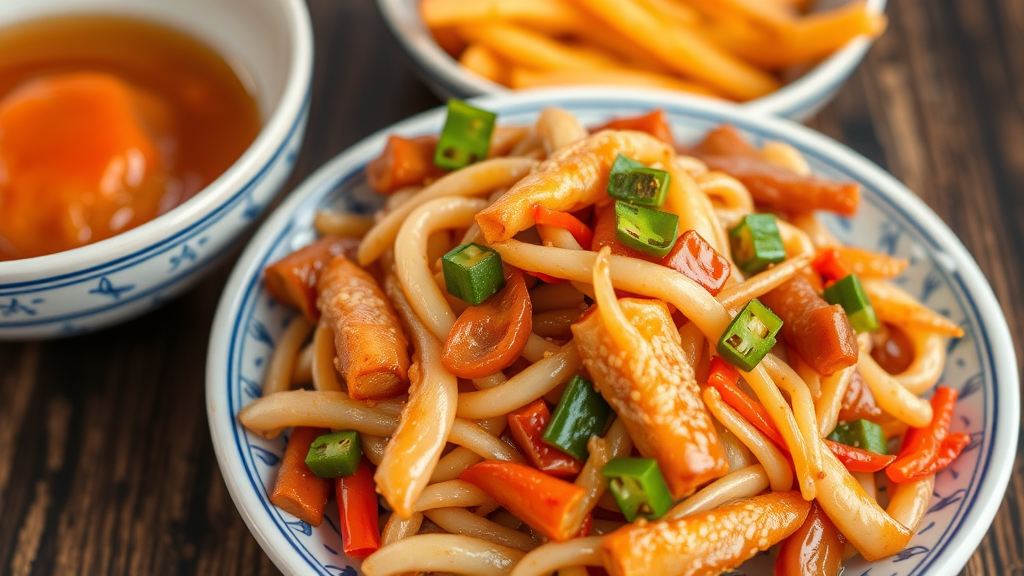

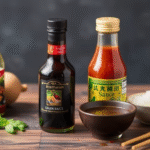
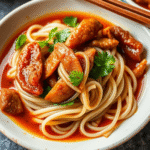
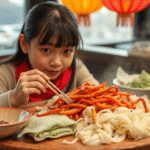
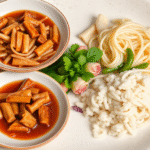
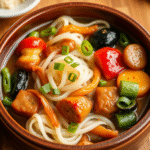
Leave a Reply